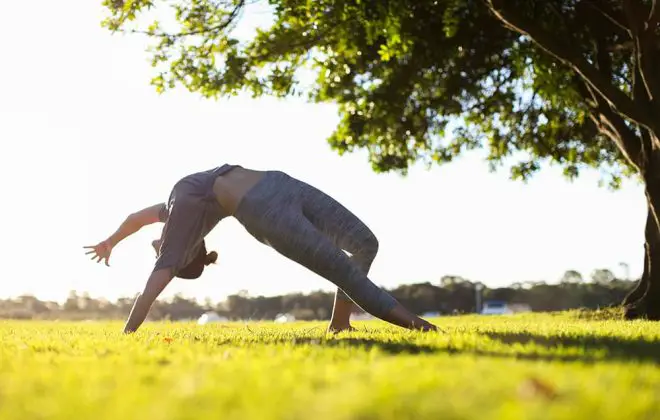Strengthen Posterior Chain To Improve Performance & Prevent Injuries
Like it or not – our mothers were right when they told us to keep our backs straight. Hunching forwards is double the trouble. It’s a bad habit and it comes from having weak muscles. And that has an effect on our results as athletes as well. In fact, one of the best ways to reduce injury risk, as well as build power & explosiveness is to strengthen posterior chain muscles.
Besides athletic benefits, there are many other reasons for paying attention to posterior muscles and keeping good posture. Breathing gets easier and deeper, digestion improves, internal organs don’t get compressed and overall well-being improves.
On top of it all, a good posture makes a person look slimmer and younger. Keeping the back straight will instantly take 2-3 kilos and several years off your look.
Anterior vs. posterior chain – what’s the difference?
In short, posterior chain muscles are those that are located on the back of our body. That includes all muscle groups from the upper back all the way to hamstrings, glutes and calves. Anterior chain muscles, on the other hand, are those on the front – chest, abs, quads, etc.
Together anterior and posterior chain muscles help to keep the body straight. And prevent it from falling forwards or backwards.
Any movement that ‘focuses’ in front of us (like pushing, doing sit ups, extending legs, etc.) will target anterior chain muscles. And everything that ‘focuses’ behind us (like pulling, extending back, etc.) will strengthen posterior chain.
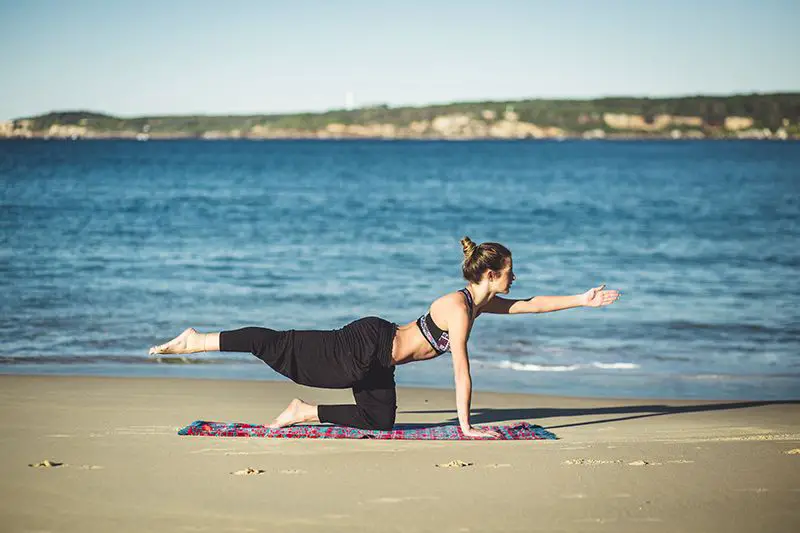
I know, it’s hard to focus on keeping good posture all the time when our lifestyle does not support it. Spending hours working / studying at the laptop or just looking down to scroll through social media or news does not help to build good posture. Not to mention the excess weight or wearing high heels.
Over time we revert to poor posture by default. But what exactly is bad about it?
Muscle imbalance and injury risk
Generally, when one of the areas in our body is weak and not able to carry the load, the body begins to compensate. It does so by distributing the load to other muscle groups that are not really designed for that – it’s much less efficient and sets the body up for injury due to overload.
For example, many people sit at the desk for extended periods of time throughout the day. That weakens and tightens up glutes and hamstrings – both primary muscle groups in running. What happens is glutes lose their ability to stabilize and extend the hip, so when athletes go running quadriceps start to compensate.
This leads to a poor running form and inefficient stride, which reduces the run economy. There’s also a very high possibility of hamstring injury once the athlete tries to perform high intensity running.
Muscle imbalance forces the body into a position where muscles can’t work efficiently and puts lots of stress on weak areas.
Imbalance makes muscles tight and weak. It often causes pain due to a pinched nerve and without addressing can result in a more serious injury. Most frequent injuries caused by weak posterior chain muscles are ‘Swimmer’s shoulder’, rotator cuff strain / tear, ‘IT Band syndrome’, ‘Runner’s knee’ and more.
I experienced this first hand following a ski accident. My fall wasn’t serious, but due to the restricted mobility in my shoulder (caused by tight chest muscles) I strained my shoulder badly. It was a hard lesson to learn, as it took 2 years to fully heal and strengthen the shoulder.

The Resilient Athlete
A Self-Coaching Guide to Next Level Performance in Sports & Life
Are you aiming to become a resilient athlete who is able to withstand any pressure? Be able to jump on any opportunity? Take any challenge life throws at you head on?
Then this book is for you.
Learn moreMuscle imbalance and overall well-being
There is also one less obvious reason why poor posture and imbalance towards anterior chain is bad. Due to improper body position, some of internal organs get compressed and don’t operate as efficiently as possible.
For example, hunching forward compresses the stomach and restricts the blood flow to the gut, which interferes with proper and fast digestion and might cause bloating and gas.
Poor posture also limits breathing by compromising lung capacity, while tight muscles restrict blood flow – both very important things for athletic performance and overall well-being.
Luckily it is easily treatable.
Strengthen posterior chain to reduce injury risk, improve performance and well-being
Posterior chain muscles usually don’t get the attention they require. As a result, many athletes miss out on a lot of strength and performance gains. Moreover, sedentary lifestyle and desk jobs force anterior chain to get tight and posterior chain to weaken.
Which is why it is important that we do something about it. For starters, there are two good rules of thumb to keep in mind:
- Work on the back of the body at least twice as much as on the front
- Always focus more on pulling than on pushing
However, it’s not a quick process to reverse years of inactivity (or too much activity on some muscle groups) that have created our lifestyle and poor posture that comes with it. But it is definitely possible. In fact, first results – like less pain – can actually be seen pretty quickly.
The best and most fundamental way to do it is to follow the ‘mobilize-stabilize-strengthen’ approach. This not only puts the body into the most optimal position, but sets it up to produce maximum performance.
Step #1 – mobilize the anterior chain with deep stretching
Before even thinking about strengthening posterior chain it’s important to address any imbalances caused by tight muscles first.
That means stretching out the muscles on the front of the body. In particular, muscle groups that most often get tight and cause problems are chest, shoulders and quadriceps.
Make sure to focus on deep stretching – get into a position when you feel only a mild discomfort and stay there for 2 minutes. Don’t push through the pain – instead, try to breathe deep and relax while exhaling. After a short while the tension in the muscles will start to slowly subside and the body will naturally get into a deeper stretch.
- Chest – tightness often results from too much desk work, carrying backpacks for long, bench pressing, etc. Do a shoulder flexion stretch or a doorway chest stretch to address it.
- Shoulders – similar to chest muscles, shoulders get tight during prolonged periods of sitting. The shoulder L-stretch is the best at relieving tension.
- Quadriceps – as mentioned earlier, quads can get tight as a result of weak hamstrings and glutes. Too much emphasis on squatting can cause tightness as well. Do a simple standing quad stretch and a hip flexor stretch to address it.
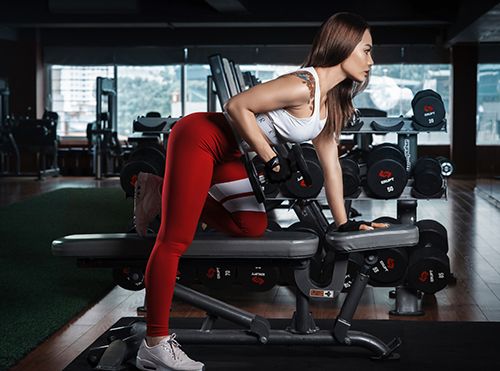
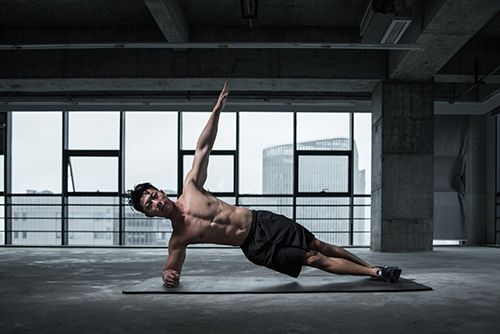

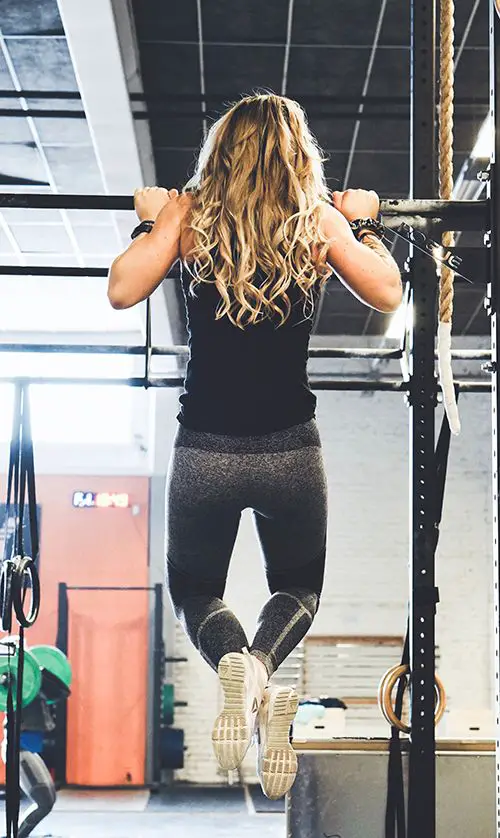
Step #2 – stabilize posterior chain with core & body weight exercises
The next step in the process is to strengthen the stabilizing muscles. These are smaller muscle groups across our body that support natural movement patterns.
Planks (regular, side & reverse planks), glute bridges, back extensions (supermans), diagonal arm and leg raises (bird dog), etc. – all of the traditional core & bodyweight exercises are amazing at building strong posterior muscles.
Honestly, by including a routine as short as 10 to 15 minutes every couple of days will by itself strengthen posterior chain muscles.
Remember – swinging or doing exercises too fast will force stronger muscles to compensate. That will make the exercise useless.
These exercises require minimum to no load and the speed of execution should be very slow. The aim is not to lift the heaviest weight, but introduce a correct movement pattern.
Also, make the effort to ‘squeeze’ the glutes and activate the backside of the body while doing stabilizing exercises (like during planks). Over time the body will train itself to use posterior chain muscles and won’t have to compensate with the muscles on the front.
Read also: 5 Core Exercises For Runners To Get Fast & Stay Injury-Free
Step #3 – strengthen posterior chain with advanced exercises
After an athlete has addressed imbalances and built stability it’s time to build power and explosiveness. This will make the athlete more efficient and stronger.
The reason this is the last step is that if the body is not in the optimal position, athletes won’t be able to achieve maximum results. And will generally have a higher risk of injuring themselves.
It’s best to start easy and build up gradually. Doing so ensures that muscles don’t get over-stressed. Pullups, inverted rows and single leg deadlifts are great exercises for building basic strength in the back and hamstrings.
Once bodyweight exercises get easy and athletes can complete 20 repetitions with ease, it’s time to add exercises that allow more load and intensity. Kettlebell swings, weighted deadlifts and one arm rows are the best options.
Did you find this information useful? Share the post with others using the buttons below.
Have an opinion? Share via links below and tag @theathleteblog
Andrejs
GET A FREE TRAINING PLAN
Subscribe to my email list and get access to a free 4-week “back in shape” training plan
You’ll also get two full-body strength sessions and some other goodies!

How did I get here?
Hey there! My name is Andrejs and I am here to inspire, entertain and get you fit for any adventure.
I went from being an over trained pro athlete to an endurance coach sharing how to listen to your body and live life to the fullest.
Traveling, new sports & activities brought new meaning to my training and made it much more effective, fun and enjoyable. And I'm here to help you do the same.

